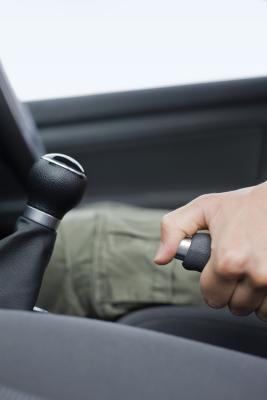
When your vehicle is operating correctly, you may not think about what could happen if your engine suddenly stopped and your vehicle lost its power. Power steering and power brakes depend on engine or electrical power to function correctly, and while sudden failure of these systems can cause an emergency situation, you will still be able to steer and brake if you experience a loss of power.
A hydraulic power assist steering system uses the pressure of fluid to help move the steering gear in response to the driver's steering input. The engine drives a power steering pump using a belt and pulleys, pressurizing the power steering system, which then delivers the fluid pressure to the steering gear through hoses. A system of valves inside of the steering gear direct the fluid pressure as needed to assist with steering movements.
Electrical systems use a specialized electric motor to provide assistance to the driver's steering input. Electrical assist systems started becoming more common around 2007, particularly in GM vehicles. As cars move toward more progressive driving systems, such as hybrids and electric vehicles, electric power assist steering will see more use because it takes advantage of systems already in use with the vehicle, and does not require an additional hydraulic pump. Electric systems usually require less maintenance, and use less power from the engine.
When the driver pushes on the brake pedal, he operates a piston inside of the master cylinder, pressurizing brake fluid. The hydraulic pressure forces pistons to extend in the brake calipers or wheel cylinders, forcing the friction material to rub against a stopping surface, slowing the vehicle. Power-assisted systems use either vacuum delivered from the engine from normal operation, or hydraulic pressure delivered from a hydraulic pump that may also be used to assist the steering, and intensify the pressure delivered from the driver's brake pedal application. This assist typically reduces the pedal travel and pressure needed to stop the vehicle safely.
The hydraulic or electric power steering system only provides assistance to the manual systems in place. If the engine stops with a hydraulic system or electrical power fails in an electric system, the vehicle can still be controlled, but with more effort from the driver. In this case, the steering will require less effort at higher vehicle speeds. Low-speed maneuvers such as what you may do in a parking lot could be extremely difficult, or even impossible if the driver does not have sufficient arm strength.
As long as the hydraulic system is still intact, the driver can brake the vehicle if engine power is lost. A vacuum system will usually provide enough reserve power for at least two applications of the brake at full power, but a hydraulic system may lose power assist immediately. When the reserve power is depleted, the driver will need to use considerably more effort to push the brake pedal to stop the vehicle safely.